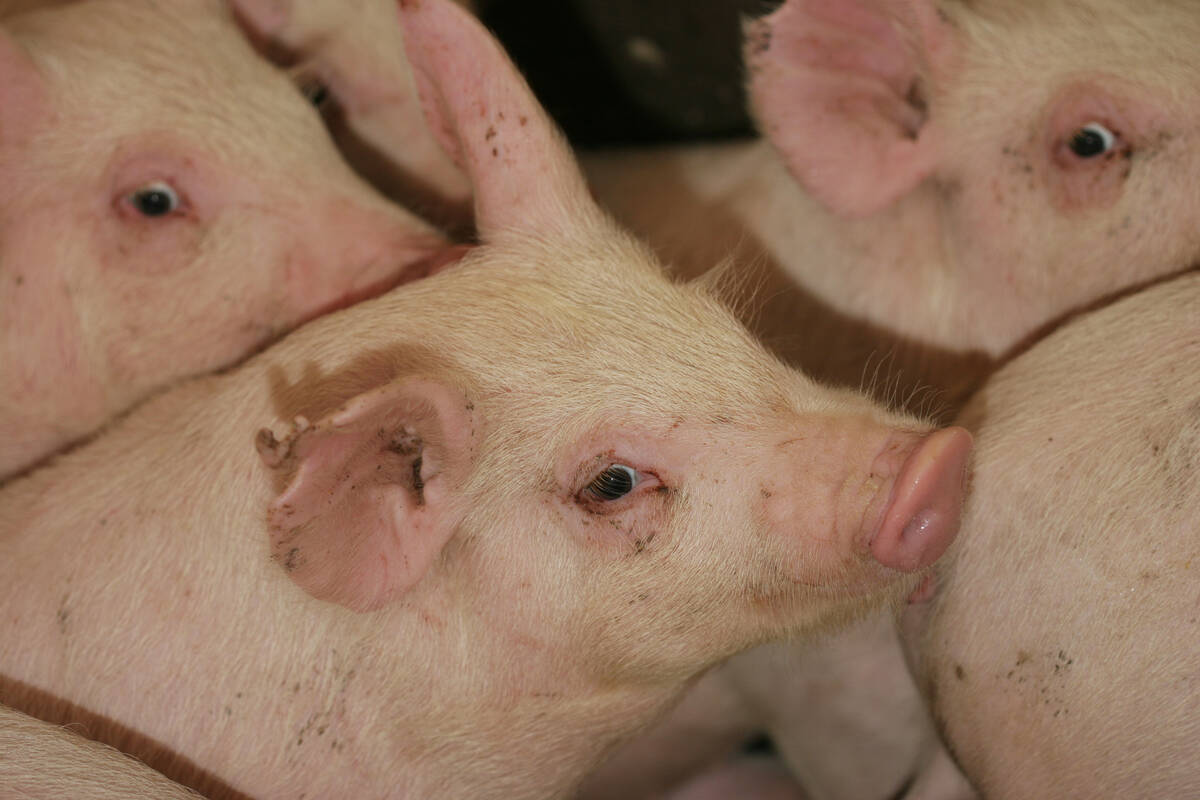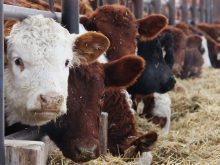DENVER, Colo. – Big Island Lowlines started as a retirement project for Paul Gostaas 10 years ago.
Today, the Edmonton farm has one of the largest herds of the small black cattle in North America.
Darrell Gostaas, Paul’s son and president of the Canadian Lowline Association, said his family’s herd started with embryos from Australia.
As soon as the Gostaases had cattle on the ground, they began showing at Edmonton’s Farmfair and the National Western Stock Show in Denver.
“The idea is to come down here, participate and promote the Canadian herd,” he said after the breed show in Denver Jan. 15.
Read Also

The Western Producer Livestock Report – September 25, 2025
The U.S. national live price average for barrows and gilts was $81.21 Sept. 17. It was $78.37 Sept. 9. U.S. hogs averaged $106.71 on a carcass basis Sept. 17, up from $106.10 Sept. 9.
That goal hit a snag in 2004 when Canadian cattle were banned from the Denver show following the discovery of BSE in Canada the previous year.
Breeding stock was finally allowed back into the United States last year, and the Gostaas family returned after meeting health tests and the controversial Colorado requirement to brand CAN on the right hip.
The branding requirement was dropped this year, but still applied to Gostaas because he sold all the cattle he brought to the show to Americans.
The BSE ban slowed development of the Lowline industry in Canada. Thirty breeders are registered in the country, compared to almost 600 in the U.S.
Members are always looking for new genetics at sales and private deals.
A sale at the Denver show averaged more than $7,000.
Gostaas bought the high seller and sold the second highest seller.
As busy people – Paul is a retired farmer and Darrell is an oral surgeon – the Gostaases want cattle that are easy to care for with the ability to convert grass to well marbled beef.
Cows weigh 800 to 900 pounds and bulls are around 1,400 lb. The animals are no higher than Gostaas’ belt buckle.
Calves are about 40 lb. at birth, which has prompted interest in using the bulls on first calf heifers.
Because the breed was derived from Angus cattle, Lowlines are polled and retain the same body structure characteristics.
They are well proportioned and are not dwarfs. Like traditional Angus, red cattle appear occasionally.
“Reds were recognized as of last year in the full-blood and percentage program,” Gostaas said.
At Rocky Mountain Lowlines near Torrington, Wyoming, crossbreeding has become a great experiment, said Brittany Hurd. Her family brought four percentage Lowlines to the Denver show, winning division ribbons and championships with their unusually coloured bulls.
Two were crossed with red Shorthorns, which produced two black bulls, while another crossed with a blue roan Shorthorn produced a black and white animal similar in colour to Canada’s Speckle Parks.
A fourth was from a Charolais dam and a full-blood Lowline sire, resulting in a heavily muscled animal with a smoky coat.
“It’s a surprise every time they hit the ground,” Hurd said.
The family already had Shorthorns and added Lowlines seven years ago. In total, the Hurds have 50 purebred and full-blood Lowlines.
Lowlines are the result of a 30 year research project conducted by the New South Wales agriculture department in Australia.
Small, medium and large Angus were produced to study feed efficiency, productivity, carcass yield and structural soundness. When the program ended, the small cattle were going to be destroyed, but a court order saved them and they were renamed Lowlines.
The first were imported to Canada in 1996 and embryos and live animals were later exported to the U.S.















